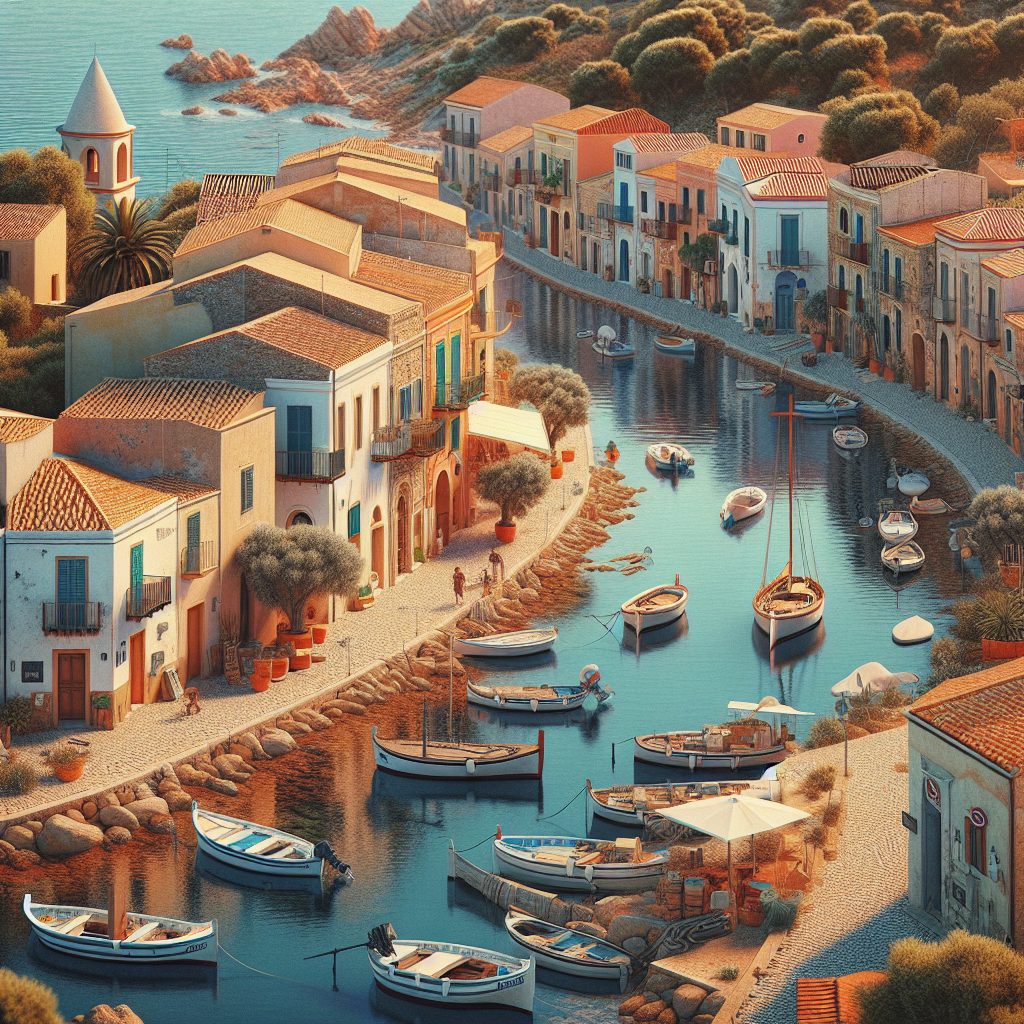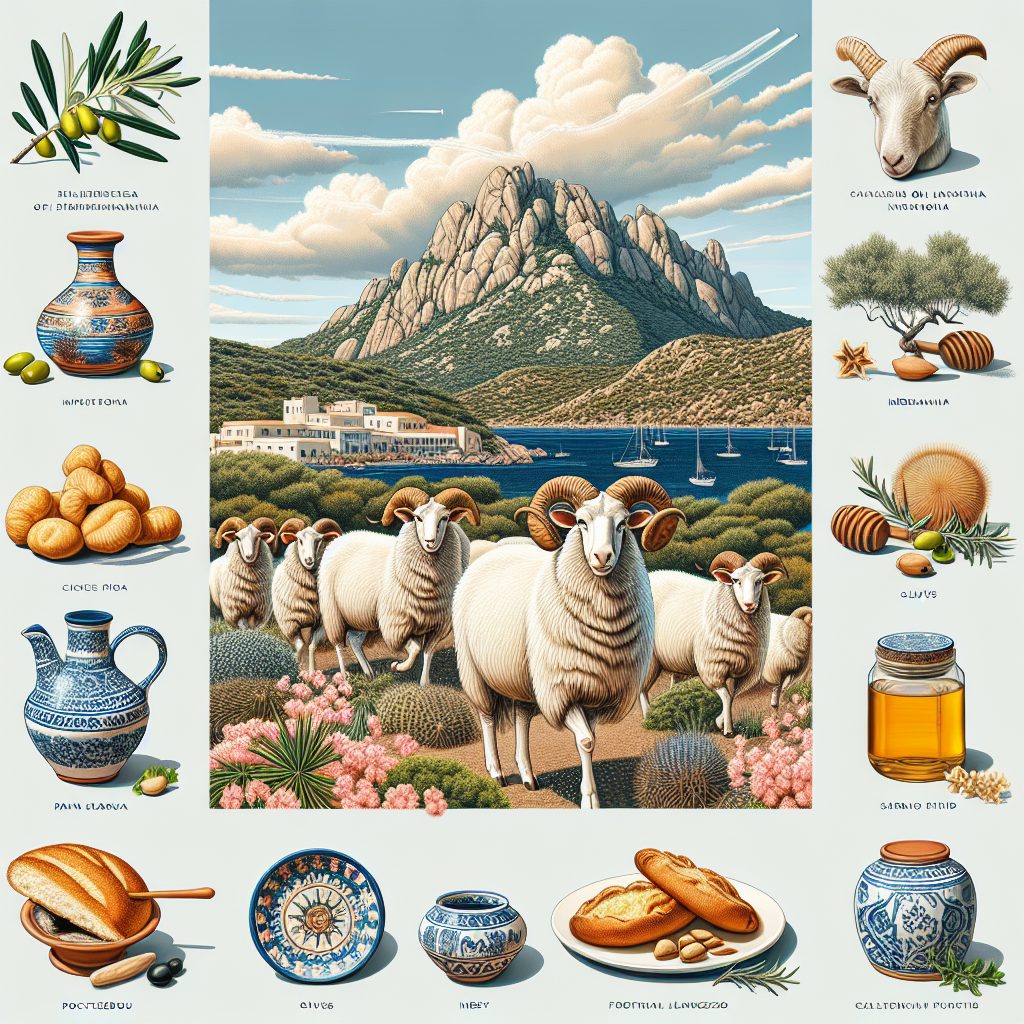Sardinian, the indigenous language spoken in the stunning Italian island of Sardinia, holds a remarkable place in linguistic heritage. With a history spanning over thousands of years, Sardinian is considered one of the most ancient languages in Europe. It is worth noting that Sardinian is not a dialect of Italian, but rather a distinct Romance language with its own unique grammatical rules and vocabulary. This linguistic treasure has had a profound impact on the island’s cultural identity and continues to be cherished by the Sardinian people. In the following sections, we will delve into the key takeaways of Sardinian linguistic heritage, exploring its significance, influences, and current revitalization efforts.
One of the most fascinating aspects of Sardinian linguistic heritage is its resilience and ability to preserve its distinct character throughout history. Despite being influenced by various ruling powers and neighboring languages, Sardinian has managed to maintain its own identity, serving as a testament to the island’s rich cultural tapestry. The linguistic features of Sardinian, such as its unique phonetics and different dialects, provide valuable insight into the island’s historical migrations, cultural exchanges, and interactions with other civilizations.
Moving forward, we will uncover the impact of Sardinian linguistic heritage on the island’s cultural practices, literature, and arts. We will also shed light on the challenges faced by the language in the modern era and the ongoing efforts to promote its use and preservation. Join us in the subsequent sections as we delve deeper into the key takeaways of Sardinian linguistic heritage, allowing us to appreciate its significance and contribute to the preservation of this ancient language.
Key Takeaways
1. Sardinia, an island located in the Mediterranean Sea, has a linguistic heritage that is distinct and rich, with the presence of multiple indigenous Sardinian languages.
2. The Sardinian language family includes two main branches: Logudorese and Campidanese, each with their own variants, dialects, and unique linguistic features.
3. Sardinian languages have faced challenges and decline over the years due to various factors, such as Italianization policies, migration, and globalization, leading to a decrease in the number of fluent speakers.
4. Efforts have been made to revitalize and preserve the Sardinian linguistic heritage through initiatives such as education programs, community associations, and media involvement, though their impact is still limited.
5. The cultural and linguistic uniqueness of Sardinian languages is recognized and protected by the regional government, aiming to promote the use and importance of Sardinian in a modern and globalized society.
What is the Significance of Sardinian Linguistic Heritage?
The Origin and Classification of Sardinian Language
Sardinian, also known as Sardu or Limba Sarda, is an ancient Romance language primarily spoken in the Italian island of Sardinia. With a rich linguistic heritage, Sardinian is regarded as one of the most ancient languages in the Mediterranean. It belongs to the Romance branch of the Indo-European language family, with strong influences from Latin, Catalan, Spanish, and Italian.
The Unique Characteristics of Sardinian Language
Sardinian stands out among Romance languages due to its distinct features, making it a fascinating linguistic heritage. It showcases phonetic, morphological, and lexical peculiarities, preserving archaic elements that have been lost in other Romance languages. The preservation of some Latin phonetics, the usage of insular forms, and a vast repertoire of dialectal variations make Sardinian an intriguing subject for linguistic studies.
The Historical Evolution of Sardinian Language
Throughout history, the Sardinian language has faced various influences and transitions. It evolved from Vulgar Latin, spoken during the Roman Empire, and developed distinct dialects across different regions of Sardinia. During the medieval period, Sardinian was influenced by various external factors, including the Catalan-Aragonese domain, which introduced significant lexical and syntactic changes.
The Importance of Sardinian Linguistic Heritage
Preserving and promoting the Sardinian linguistic heritage is crucial for cultural identity and historical understanding. The language reflects the island’s rich history, traditions, and unique social structure. It serves as a link to centuries-old customs, folklore, and literature, contributing to the conservation of Sardinia’s cultural diversity and enriching the global understanding of human linguistic capabilities.
Challenges and Future Prospects for Sardinian Language
The Sardinian language has faced challenges over the years, including language policies favoring Italian and the influence of mass media. However, efforts are being made by linguists, cultural organizations, and Sardinian communities to safeguard and revitalize the language. Bilingual education programs, language revitalization initiatives, and digital platforms promoting Sardinian literature and linguistic resources have emerged, creating a promising outlook for the Sardinian linguistic heritage.
How to Preserve and Promote Sardinian Language?
- Encourage bilingual education to ensure future generations have proficiency in both Sardinian and Italian.
- Support local cultural organizations and institutions dedicated to preserving Sardinian linguistic heritage.
- Promote the use of Sardinian language in literature, music, and other art forms.
- Develop digital platforms and online resources to facilitate learning and access to Sardinian language materials.
- Collaborate with international linguistic programs and initiatives for knowledge exchange and research on minority languages.
Frequently Asked Questions
1. What is Sardinian linguistic heritage?
Sardinian linguistic heritage refers to the unique language and dialects spoken in the Italian island of Sardinia. It traces its roots back to ancient times and showcases a rich linguistic diversity.
2. How many dialects are there in Sardinia?
Sardinia is known for its impressive linguistic diversity with over 20 dialects spoken across the island. These dialects vary significantly in vocabulary, pronunciation, and grammar.
3. Are Sardinian languages endangered?
Unfortunately, many Sardinian languages are considered endangered due to the dominance of the Italian language and the influence of globalization. Efforts are being made to preserve and promote the Sardinian linguistic heritage.
4. Can I learn to speak Sardinian?
Yes, you can learn to speak Sardinian! Although it may require some dedication and practice, there are resources available, such as language courses and online materials, to help you learn the basics of Sardinian.
5. Is Sardinian similar to Italian?
Sardinian has some similarities to Italian as it belongs to the Romance language family. However, it also has distinct features that set it apart, including its own grammatical rules and vocabulary.
6. Are there any efforts to preserve Sardinian dialects?
Yes, there are several initiatives in place to protect and preserve Sardinian dialects. These include cultural associations, language schools, and the promotion of language learning within local communities.
7. What is the historical significance of Sardinian linguistic heritage?
The Sardinian linguistic heritage holds great historical significance as it reflects the island’s rich cultural heritage and its connections to ancient civilizations, such as the Nuragic civilization.
8. Can Sardinian dialects still be heard in everyday life?
Yes, Sardinian dialects are still spoken in certain regions of Sardinia. While Italian is widely used, especially in urban areas, many rural communities have preserved their dialects and continue to use them in daily conversations.
9. Is Sardinian influenced by other languages?
Throughout history, Sardinian has been influenced by various languages and cultures, including Latin, Catalan, Spanish, and Arabic. These influences have contributed to the unique characteristics of the Sardinian linguistic heritage.
10. Are there any Sardinian language resources available online?
Yes, there are numerous online resources available for those interested in learning more about Sardinian and its dialects. These resources include dictionaries, grammar guides, and language learning websites.
Final Thoughts
Exploring the Sardinian linguistic heritage is a fascinating journey into the island’s cultural tapestry. The multitude of dialects, their historical significance, and the ongoing efforts to preserve them highlight the importance of recognizing and cherishing linguistic diversity.
As globalization continues to shape the world, it becomes crucial to maintain and celebrate unique linguistic heritages like Sardinian. By appreciating and learning about these languages, we not only enrich our understanding of human history but also contribute to the preservation of cultural identities. Let us embrace the beauty of Sardinian linguistic heritage and support efforts that ensure its longevity.






